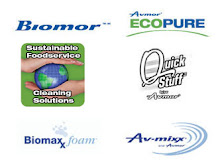While the cleaning industry—and ISSA in particular—strive to reinforce the value of proper cleaning and its role in preserving building assets, tough economic times can pressure certain facilities to scale back their regular carpet cleaning programs. Some facility managers who would normally have their carpets cleaned two or three times per year are now postponing cleaning for as long as possible to reduce expenditures. No matter what technique is used, carpet cleaning typically is time consuming and labor intensive.
When carpet cleaning is postponed, the amount of spot and stain removal required usually increases. Not only are there more stains and spots to deal with, but cleaning workers report they are also dealing with a wider variety of spots and stains, many of which they have never encountered before.
The first order of business when removing spots and stains is to identify the substance being removed. This helps cleaning workers determine which steps, chemicals, and procedures will be necessary to remove the stain. However, this can prove to be more difficult than imagined.
The following questions can help cleaning workers in identifying a mysterious stain or spot on a carpet.
- What does the client say? If the stain is in or near a specific office, for instance, ask those working in that office if they know what caused it.
- Where is the stain located? Different areas are likely to have different kinds of soiling. For instance, spots and stains near a foodservice area will likely be the result of organic soils such as food, soda, coffee, etc., while soiling in a warehouse area may be caused by inorganic soils, such as those derived from petroleum.
- Is the stain shiny? A shiny appearance often indicates that a stain is inorganic, while a dull appearance often means it is organic.
- Is the substance in the fiber or on the fiber? A substance that has been ground in to the carpet fiber is much more difficult to remove than a substance merely sitting on the outside surface of the fiber.
- Is there an odor? Blot the area with a damp towel. If there is an odor, it will often transfer to the towel, perhaps allowing the cleaning worker to identify its source.
Read more:







